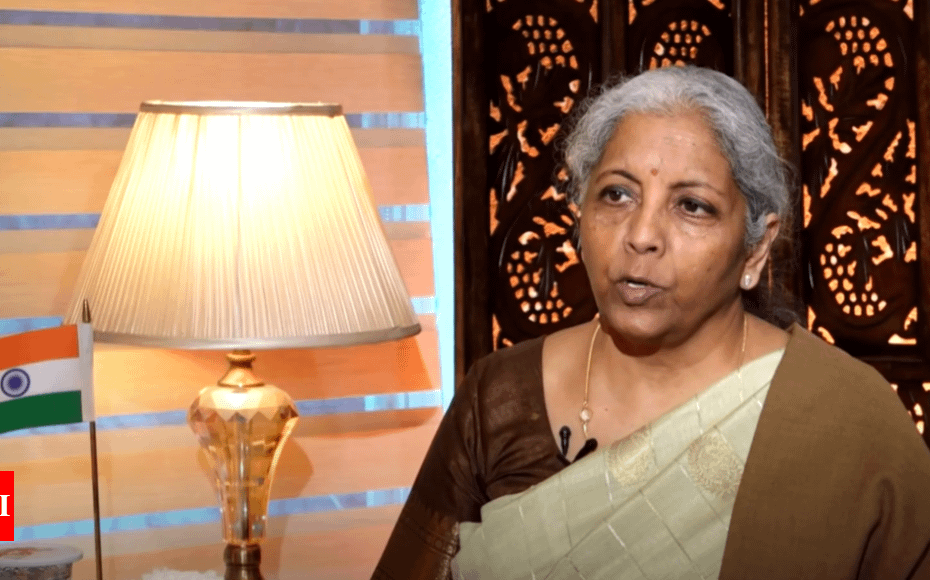Union Finance Minister Nirmala Sitharaman addressed India’s economic roadmap, fiscal policies, and growth strategies after presenting her eighth consecutive Union Budget. She emphasized fiscal consolidation, infrastructure expansion, and measures to support economic resilience amid global challenges.
New Tax Regime: More Money in People’s Hands
Sitharaman stated that the revised tax slabs aim to simplify taxation and increase disposable income.
“This tax proposal will put more money in people’s hands. They can decide how to spend or save it,” she said.
The streamlined structure is designed to make tax compliance easier and predictable for taxpayers.
India’s Economic Growth & Macroeconomic Outlook
Sitharaman highlighted that India remains the fastest-growing major economy, driven by strong domestic consumption and government-led capital expenditure. She reaffirmed the government’s fiscal discipline, aiming to reduce the fiscal deficit to below 4.5% of GDP by 2025-26.
Despite global uncertainties, India is well-positioned for steady economic growth through prudent policies and strategic investments.
Global Challenges & India’s Economic Resilience
The finance minister acknowledged external pressures like geopolitical tensions, supply chain disruptions, and inflation but stressed that India’s diversified economy has helped absorb these shocks.
“Despite slowing global trade, India’s exports remain strong. We are working on new trade partnerships to reduce market dependence,” she noted.
Fiscal Consolidation & Debt Management
Sitharaman reaffirmed India’s commitment to fiscal discipline and debt reduction. She acknowledged increased borrowing during the pandemic but emphasized that the government is adhering to its fiscal targets.
Moody’s Ratings, however, ruled out an immediate upgrade of India’s sovereign rating, citing the need for further debt reductions and revenue growth.
Infrastructure & Investments: Key Growth Drivers
Infrastructure development remains a priority under the PM Gati Shakti initiative. The budget has allocated substantial capital expenditure for roads, railways, and ports to enhance connectivity and long-term growth.
The government’s National Monetisation Pipeline (NMP) is also generating revenue by leasing public assets for reinvestment in infrastructure projects.
Banking & Credit Growth
Sitharaman expressed confidence in India’s banking sector stability, citing improved asset quality and reduced non-performing assets (NPAs). She emphasized continued support for MSMEs through credit guarantee schemes and increasing credit flow to businesses.
Manufacturing & Industrial Policy
The ‘Make in India’ and Production-Linked Incentive (PLI) schemes continue to boost manufacturing, particularly in electronics, pharmaceuticals, and auto components.
India is becoming a global manufacturing hub, with labor reforms and business-friendly policies attracting more foreign direct investment (FDI).
Agriculture & Rural Development
The government remains committed to agriculture and rural welfare, focusing on price stability, productivity, and market linkages. Key initiatives include PM-KISAN, irrigation development, and agri-tech adoption to modernize farming.
Taxation & GST Simplification
Sitharaman assured that tax reforms will continue to improve transparency and ease of compliance. The GST system has stabilized, with strong collections reflecting economic growth.
Corporate tax cuts have boosted investments, and further tax simplifications aim to encourage business expansion.
Inflation Management & Consumer Prices
The government, in coordination with the Reserve Bank of India (RBI), is actively managing inflation through measures like reducing import duties on essential goods and boosting domestic production.
Digital Economy & Technology Growth
The finance minister highlighted the success of UPI, fintech innovations, and digital governance as key factors in India’s economic expansion. The government is investing in AI, blockchain, and cybersecurity to strengthen India’s digital infrastructure.
Public Expenditure & Capital Investment
Sitharaman reassured that the government maintains high-quality capital expenditure, allocating ₹11.21 lakh crore for infrastructure and growth projects.
She acknowledged that elections slowed spending last year but emphasized that fiscal prudence and infrastructure investments remain key priorities.
India’s economic trajectory reflects stability, resilience, and long-term growth potential, with strong fiscal management, industrial expansion, and digital transformation driving the nation forward.

